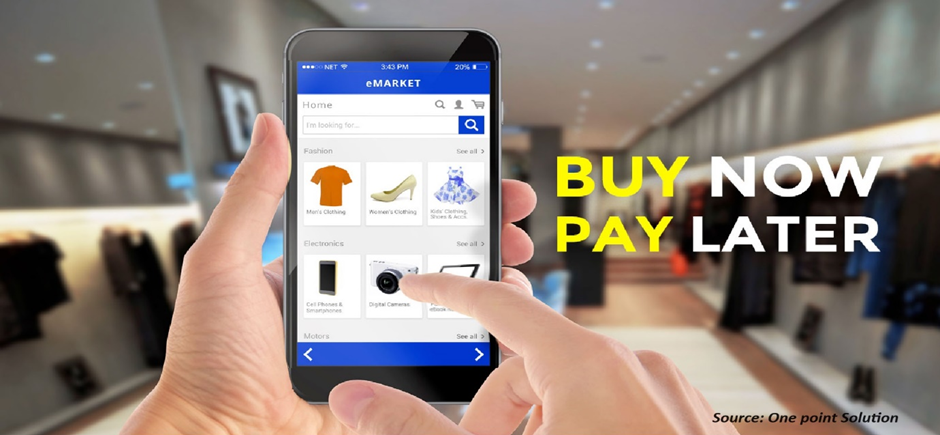
North America Mobile Payment Market by Age (Generation Z, Millennials, Generation X, and Baby Boomers), by Payment Type (Proximity and Remote), and by Application (Money Transfers, Merchandise Purchases, Bill Payments, Airtime Top-ups, Ticketing, and Others) – Opportunity Analysis and Industry Forecast, 2024–2030
Industry: ICT & Media | Publish Date: 01-Sep-2024 | No of Pages: 126 | No. of Tables: 89 | No. of Figures: 54 | Format: PDF | Report Code : IC2468
North America Mobile Payment Market Overview
The North America Mobile Payment Market size was valued at USD 10.14 billion in 2023, and is predicted to reach USD 33.73 billion by 2030, with a CAGR of 17.7% from 2024 to 2030. The mobile payment system, also referred to as money transfer, mobile money, m-payments, electronic payments, and digital payments, facilitates financial transactions using mobile devices such as smartphones, tablets, and wearables.
These transactions are facilitated through mobile apps or various methods such as proximity and remote transactions. Mobile payment systems encompass diverse types such as mobile wallets, mobile banking apps, and online payment services such as PayPal, Venmo, and Google Pay.
Employing technologies such as SMS, near-field communication (NFC), quick response (QR) codes, and others, these systems ensure seamless transactions while employing robust security measures including encryption and biometric authentication to safeguard personal and financial data.
Appreciated for their convenience, speed, security, and integration with other financial tools, mobile payment systems witness widespread adoption. Moreover, users can configure payment apps to automatically settle bills, such as utility or credit card bills, ensuring efficient financial management and preventing late payments.
High Adoption of Smartphones Propels the North America Mobile Payment Market
The widespread adoption of smartphones and the increasing penetration of the internet are pivotal drivers accelerating the growth of the mobile payment market in the region. With smartphones becoming ubiquitous and internet connectivity expanding globally, a vast majority of consumers now have access to the essential tools required for mobile payments.
Smartphones serve as convenient and portable payment terminals, enabling users to make transactions anytime, anywhere. Growing internet penetration ensures seamless connectivity, facilitating secure and real-time payment processing.
As more consumers embrace smartphones and gain access to reliable internet services, the potential user base for mobile payments experiences exponential growth. This trend not only enhances convenience and accessibility for consumers but also incentivizes merchants to adopt mobile payment solutions to cater to evolving consumer preferences, thereby propelling the overall expansion of the mobile payment market.
Rising Fintech and Digital Banking Services Drives the North America Mobile Payment Market
The surge of fintech and digital banking significantly propels the mobile payment market forward in the region. Fintech innovations and digital banking services offer streamlined financial solutions accessible via mobile devices, democratizing financial services.
Consumers can conveniently manage their finances, execute payments, and conduct transactions from their smartphones. Integration of mobile payment features within fintech apps and digital banking platforms enhances user experience with seamless access to payment options and account management.
Fintech firms and digital banks often pioneer payment technologies such as peer-to-peer transfers and contactless payments, driving adoption and shaping industry standards. As consumers increasingly embrace fintech and digital banking, the mobile payment market expands, offering greater choice and accessibility in the digital economy.
Resistance from Traditional Financial Institutions Restrains the North America Mobile Payment Market Growth
Resistance from traditional financial institutions presents a significant barrier to the growth of the North America mobile payment market. Established banks and financial entities may perceive mobile payment solutions as disruptive to their existing business models, leading to reluctance in supporting or promoting these innovative technologies. This resistance arises from concerns about potential revenue cannibalization, regulatory complexities, and the perceived threat of losing control over payment infrastructures.
Consequently, traditional financial institutions may hesitate to invest in mobile payment initiatives or collaborate with fintech startups and mobile payment providers, impeding the development and adoption of innovative payment solutions. Overcoming this resistance necessitates collaboration, regulatory alignment, and education to demonstrate the benefits of mobile payments for both financial institutions and consumers, thus unlocking the full potential of the mobile payment market.
The Emergence of Real-Time Payment Creates Opportunities in the North America Mobile Payment Market
The rise of real-time payments presents a pivotal opportunity for the North America mobile payment market growth, ushering in a new era of speed and efficiency in fund transfers in the region. Real-time payment systems enable instant transactions between parties, offering seamless and convenient payment experiences.
This advancement enables mobile payment providers to address diverse needs, whether it's splitting bills with friends, making retail purchases, or transferring funds between accounts. Additionally, the integration of real-time payment capabilities into various industries, such as e-commerce, peer-to-peer lending, and on-demand services, fosters innovation and expands the mobile payment ecosystem. In essence, the emergence of real-time payments transforms payment processing and creates abundant opportunities for growth and innovation in the mobile payment market.
The U.S. Dominates the North America Mobile Payment Market Share
The U.S. dominates the North America market share for several reasons. Firstly, the region boasts a highly developed economy with a large and affluent consumer base, making it an attractive market for mobile payment providers. Secondly, the widespread adoption of smartphones and advanced mobile technologies has created a fertile ground for the growth of mobile payments, with popular platforms such as Apple Pay, Google Pay, and PayPal leading the market.
Additionally, the U.S. financial ecosystem is well-established, with a robust network of banks, card issuers, and retailers that support mobile payment integrations. Moreover, the regulatory environment in the U.S. has been relatively conducive to the expansion of mobile payments, fostering innovation and competition in the industry. Combined, these factors contribute to the U.S.'s dominant position in the North America mobile payment market.
Canada is Expected to Show Steady Growth in North America Mobile Payment Market
Canada is expected to show steady growth in the North American market for several reasons. Firstly, similar to the United States, Canada boasts a highly developed economy with a technologically savvy population and cybersecurity, laying a strong foundation for mobile payment adoption.
Secondly, the Canadian government has been supportive of digitalization and innovation in the financial sector, promoting initiatives to modernize payment systems and encourage electronic transactions. Additionally, the Canadian financial industry is characterized by a competitive landscape, with banks and fintech companies actively investing in mobile payment solutions to meet evolving consumer preferences.
Moreover, Canada's proximity and close economic ties to the United States facilitate the adoption of successful mobile payment models and technologies, further driving growth in the Canadian market. These factors collectively position Canada for steady growth in its mobile payment market within North America.
Competitive Landscape
Various key market players operating in the North America mobile payment industry include Alphabet, Inc. (Google), Alibaba Group Holdings Limited, Amazon.com, Inc., Apple, Inc., PayPal Holdings, Inc., Visa, Inc., Tencent Holdings Limited (WeChat), MasterCard International, Inc., Samsung Electronics Co. Ltd., Block, Inc., and others. These key players have adopted various strategies to strengthen their market share.
North America Mobile Payment Market Key Segments
By Age
-
Generation Z
-
Millennials
-
Generation X
-
Baby Boomers
By Payment Type
-
Proximity
-
Near-Field Communication (NFC)
-
Quick Response (QR) Code Payments
-
-
Remote
-
Internet Payments
-
SMS/Direct Carrier Billing
-
By Application
-
Money Transfers
-
Merchandise Purchases
-
Bill Payments
-
Airtime Top-ups
-
Ticketing
-
Others
By Country
-
The U.S.
-
Canada
-
Mexico
REPORT SCOPE AND SEGMENTATION:
|
Parameters |
Details |
|
Market Size in 2023 |
USD 10.14 Billion |
|
Revenue Forecast in 2030 |
USD 33.73 Billion |
|
Growth Rate |
CAGR of 17.7% from 2024 to 2030 |
|
Analysis Period |
2023–2030 |
|
Base Year Considered |
2023 |
|
Forecast Period |
2024–2030 |
|
Market Size Estimation |
Billion (USD) |
|
Growth Factors |
|
|
Countries Covered |
3 |
|
Companies Profiled |
10 |
|
Market Share |
Available for 10 companies |
|
Customization Scope |
Free customization (equivalent up to 80 working hours of analysts) after purchase. Addition or alteration to region, regional, and segment scope. |
|
Pricing and Purchase Options |
Avail customized purchase options to meet your exact research needs. |
KEY PLAYERS
-
Alphabet, Inc. (Google)
-
Alibaba Group Holdings Limited
-
Amazon.com, Inc.
-
Apple, Inc.
-
PayPal Holdings, Inc.
-
Visa, Inc.
-
Tencent Holdings Limited (WeChat)
-
MasterCard International, Inc.
-
Samsung Electronics Co. Ltd.
-
Block, Inc.




 Speak to Our Analyst
Speak to Our Analyst

































